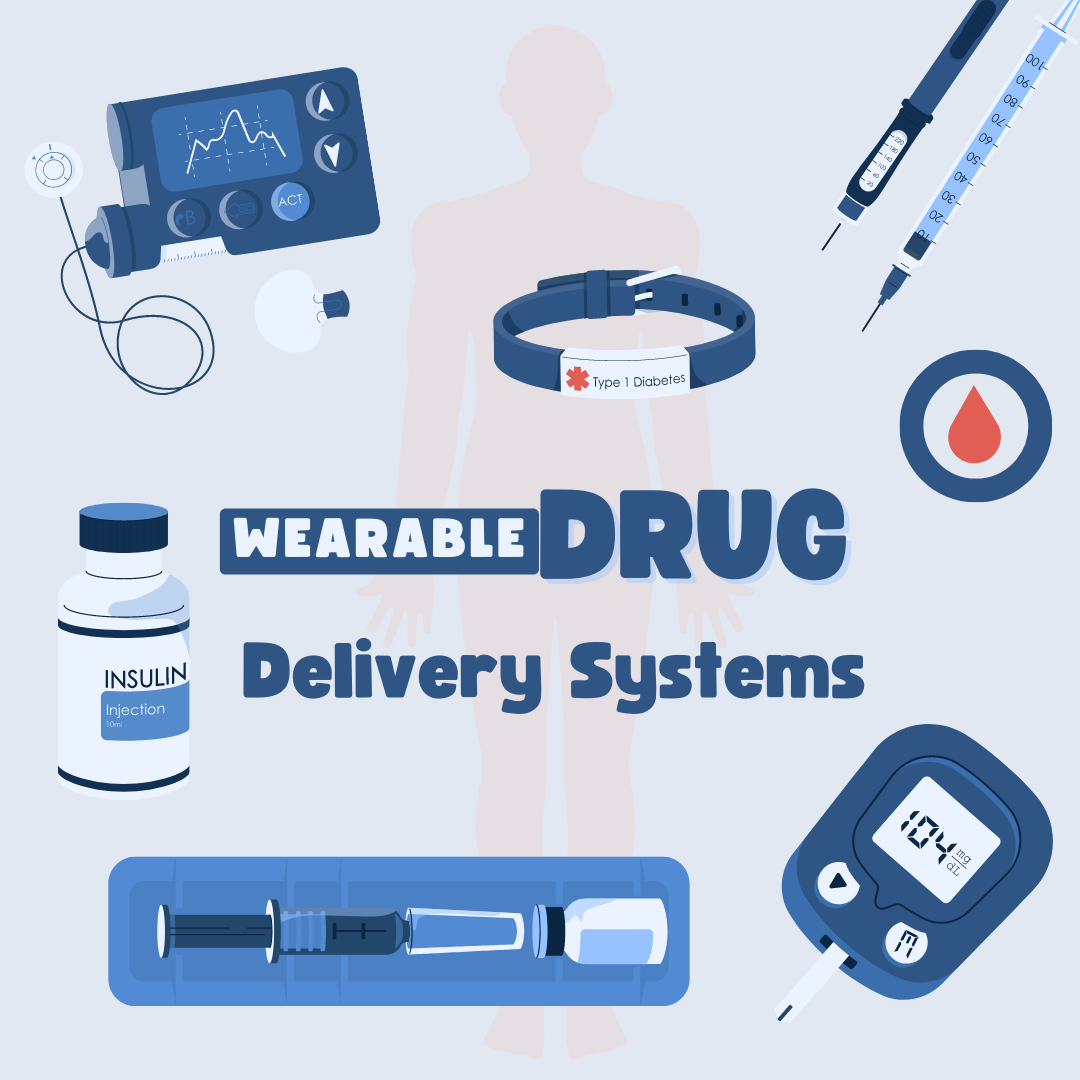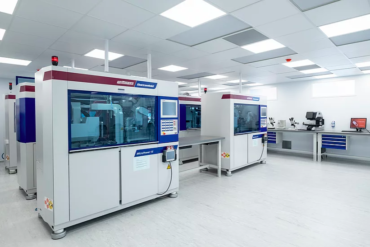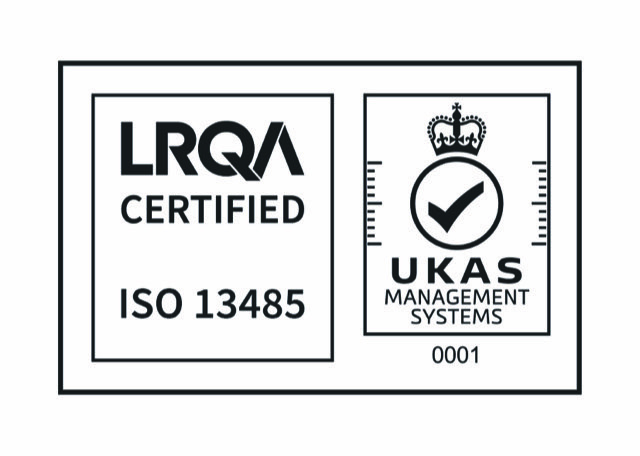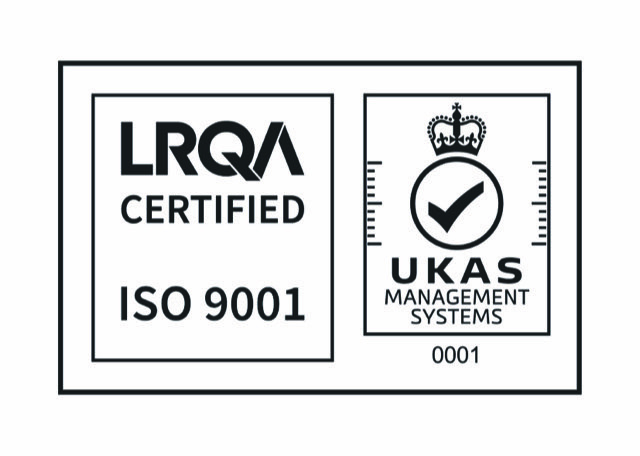The trend towards wearable drug delivery systems
What are Wearable drug delivery systems?
Drug delivery devices are specialised medical equipment used to deliver a medicine or therapeutic ingredient along a preset route, with applications in a variety of medical procedures to ensure rapid medication absorption into the circulation and precise drug administration to the central nervous system. As the medication delivery sector is evolving quickly, more and more innovations are being introduced to meet the greater demands from patients for higher flexibility in treatment plans, less painful procedures and a minimal level of errors, at the same time, reduce workloads and cost for hospitals. In a recent report, wearable drug delivery systems are considered to be a game-changing development in the healthcare sector.
Wearable drug delivery systems are affixed to the body and automatically provide predetermined dosages to the patient. Wearable drug delivery devices can come in the forms of belts, microneedle patches, injectors, drug-eluting contact lenses, etc. Some modern gadgets could contain sophisticated links to cell phones or measurement equipment, allowing the drug to be delivered wherever and whenever is convenient. They provide patients with more safety, adaptability, and convenience, which improves their general quality of life, especially for those with chronic diseases like diabetes, cancer, cardiovascular diseases, etc.
Additionally, while the majority of medications are administered orally or intravenously, however for some uses, the skin may allow for far more precise and targeted drug delivery. The fundamental advantage of using skin is that the whole gastrointestinal tract is avoided, so there is no need to deliver a substantially bigger dose to make up for the loss in the gastrointestinal system.
The market for Wearable drug delivery systems
In 2020, the wearables market’s home care end-use category had strong growth, indicating a trend towards self-administration that began even before the covid-19 epidemic. For instance, the majority of patients polled in a 2018 study carried out in Belgian hospitals stated they would like to self-administer medication and that they had a favourable opinion of it (Vanwesemael T et al, 2018).
According to a recent report, the wearable injectors market is expected to grow at a strong CAGR of 12.4%, from a value of USD 6.7 billion in 2022 to USD 20.9 billion by 2032. The main reasons for this growth is due to the rising prevalence of chronic illnesses including diabetes, cardiovascular disease, and cancer as well as the increased usage of biologics such as monoclonal antibodies for therapeutic interventions. Other reasons include the increasing number of R&D activities in medtech and technological advancements, as well as the higher demand for home-based treatments, especially for senior patients and those who do not have the flexibility to go to the hospitals frequently.
The study by GlobalData estimates that more than 100 businesses, including technology suppliers, well-known healthcare organisations, and burgeoning start-ups, are involved in the creation and use of wearable medicine delivery systems. Some of the key players include Philip Morris International, Bayer, Becton Dickinson and Co, Baxter International, Fresenius and Co, Medtronic, etc.
On a bigger scale, Market.us projects that the market for wearable medical devices will reach US$165.5 billion by 2032, growing at a CAGR of about 19.1% between 2023 and 2032 due to rising consumer awareness of health and fitness. The industry was predicted to be valued at US$30.1 billion in 2022. The tracker has amassed the largest market share in the market for wearable medical devices by product category, while Diagnostic and monitoring devices now have the biggest market share by device type, and are expected to increase by 10.6% over the course of the projection. Particularly, the home healthcare industry has the biggest market share by application, supporting the growth of wearable drug delivery systems for patients’ convenience.
Key factors in Wearable drug delivery systems
In order to maximize patient comfort, which is primarily the aim of weartable drug delivery systems, it is important to pay great attention to biocompatibility and moisture management.
When wearing for a long time, the skin beneath the body-worn device may become uncomfortable, itchy, or red if there are any irritants in the adhesive. Through skin contact, leaching from the device, for example, from metallic parts, synthetic materials, or bio sourced materials, can result in rashes, allergic reactions or bacterial accumulation. Additionally, sweat may also cause chemical reactions, such as galvanic corrosion, when it comes into contact with some electrical parts of wearables, which might be dangerous for the device and the patient’s health. The risk of irritation might also be increased by mechanical factors like abrasion or sustained pressure from user engagement with the device. Hence, developers of drug delivery systems should ensure that adhesive materials satisfy the ISO10993 standard tests for cytotoxicity, irritation, and sensitivity, as well as local laws applicable to each worldwide location and allergy issues pertinent to the intended usage of the device.
Beside the challenge in the design of skin-contact layer adhesives and construction-layer adhesives, another reason for patients to likely feel uncomfortable is the moisture from perspiration or contact with fluids building up beneath the worn medicine delivery device. As a result, this can cause the patient to take out the gadget too soon or suffer a negative incident like a skin rip or infection. The majority of adhesive substances could regulate moisture either by letting fluid travel through microscopic holes in the material and evaporate, or collecting moisture and retaining it away from the skin (fluid absorption), or both.
Additionally, in order to assure patient comfort as well as device manufacturability, drug delivery system developers work closely with adhesive material suppliers with experience in wearable medical devices to establish the desired design and construction solutions.
Challenges for Wearable drug delivery systems
While being painless, flexible and easy-to-use, the development of wearable drug delivery systems faced some drawbacks that required advanced technology and significant R&D investments to be solved. Some of the major challenges are multiple dosage, non-selective targeting, uncontrolled drug biodistribution, and toxicities.
Additionally, it is the aim for many wearable drug delivery systems scientists and engineers to extend the wear periods of their devices. Longer wear periods can result in a better economic justification for a gadget since replacement costs are lower. At the same time, they can also improve patient comfort and adherence to a pharmacological treatment regimen, as there is less pressure on the patient to remember to take their medication or to halt their regular activities to swap out their drug delivery system sensor or injector if a wearable device remains in place for a longer time. The typical wear-time for devices was between 3 days and a week, however, device makers frequently aim for wear periods of 3 to 4 weeks to improve the overall effectiveness of the design. One way to extend the wear period of wearable drug delivery devices is to improve their battery life or data storage capacity, which can be made possible with the advancements in technology from other industries.
Wearable drug delivery devices are the logical next step in the evolution of chronic illness treatment in a culture where everything is expected to happen instantly with a high level of flexibility and convenience for patients. In order to further develop such an interesting but challenging field, wearable drug delivery system designers will need to further specialise their process and testing system, cooperating with international manufacturers to stay on top of the game and making the commercialisation more feasible globally.
References:
Vanwesemael T et al, “The willingness and attitude of patients towards self-administration of medication in hospital”. Ther Adv Drug Saf, 2018, Vol 9(6), pp 309–321.

Micro Systems’s vast know-how in design, ultra-precision micro machining capabilities and expert knowledge in micro molding technology allow us to manufacture advanced microfluidic molds with tolerance as low as +/-0.001mm, with integrated optics. We have a dedicated micro molding facility, and have ISO13485 and ISO9001 certifications. For more information, please Contact us or visit our website.






